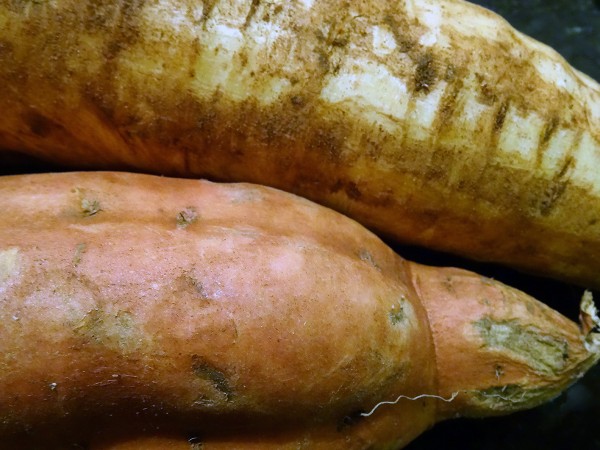 This rather strange question has been central to a storm that has been brewing between various celebrity chefs, including Jamie Oliver and Hugh Fearnley-Whittingstall, and the supermarkets. Supermarkets say that consumers don’t want irregular shaped vegetables, such as carrots, parsnips and potatoes. ‘Nonsense’, say their critics.
This rather strange question has been central to a storm that has been brewing between various celebrity chefs, including Jamie Oliver and Hugh Fearnley-Whittingstall, and the supermarkets. Supermarkets say that consumers don’t want irregular shaped vegetables, such as carrots, parsnips and potatoes. ‘Nonsense’, say their critics.
At the centre of the storm are the farmers, who find a large proportion of their vegetables are rejected by the supermarkets. And these are vegetables which are not damaged or bad – simply not of the required shape. Although these rejected vegetables have been described as ‘wonky’, in fact many are not wonky at all, but simply a little too large or too small, or too short or too long. Most of these vegetables are simply wasted – ploughed back into the ground, or at best used for animal feed.
And it’s not just shape; it’s colour too. Many producers of apples find a large proportion being rejected because they are too red or not red enough.
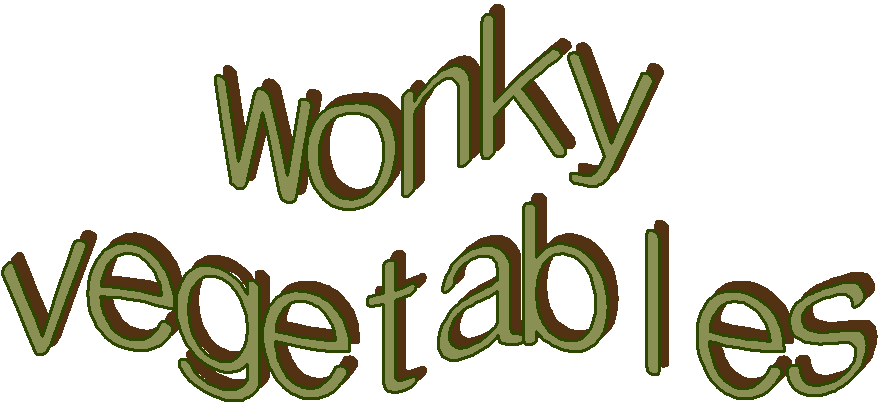 But do consumers really want standardised fruit vegetables? Are the supermarkets correct? Are they responding to demand? Or are they attempting to manipulate demand?
But do consumers really want standardised fruit vegetables? Are the supermarkets correct? Are they responding to demand? Or are they attempting to manipulate demand?
Supermarkets claim that they are just responding to what consumers want. Their critics say that they are setting ludicrously rigid cosmetic standards which are of little concern to consumers. As Hugh Fearnley-Whittingstall states:
‘It’s only when you see the process of selection on the farm, how it has been honed and intensified, it just looks mad. There are many factory line systems where you have people looking for faults on the production line; in this system you’re looking for the good ones.
What we’re asking supermarkets to do is to relax their cosmetic standards for the vegetables that all get bagged up and sold together. It’s about slipping a few more of the not-so-perfect ones into the bag.’
In return, consumers must be prepared to let the supermarkets know that they are against these cosmetic standards and are perfectly happy to buy slightly more irregular fruit and vegetables. Indeed, this is beginning to happen through social media.  The pressure group 38 degrees has already taken up the cause.
The pressure group 38 degrees has already taken up the cause.
But perhaps consumers ‘voting with their feet’ is what will change supermarkets’ behaviour. With the rise of small independent greengrocers, many from Eastern Europe, there is now intense competition in the fruit and vegetables market in many towns and cities. Perhaps supermarkets will be forced to sell slightly less cosmetically ‘perfect’ produce at a lower price to meet this competition.
Videos
 Hugh’s War on Waste Episode 1 BBC on YouTube, Hugh Fearnley-Whittingstall (2/11/15)
Hugh’s War on Waste Episode 1 BBC on YouTube, Hugh Fearnley-Whittingstall (2/11/15)
 Hugh’s War on Waste Episode 2 BBC on YouTube, Hugh Fearnley-Whittingstall (9/11/15)
Hugh’s War on Waste Episode 2 BBC on YouTube, Hugh Fearnley-Whittingstall (9/11/15)
Articles
Hugh Fearnley-Whittingstall rejects Morrisons’ ‘pathetic’ wonky veg trial The Guardian, Adam Vaughan (9/11/15)
Jamie Oliver leads drive to buy misshapen fruit and vegetables The Guardian, Rebecca Smithers (1/1/15)
Hugh Fearnley-Whittingstall’s war over wonky parsnips The Telegraph, Patrick Foster (30/10/15)
Asda extends ‘wonky’ fruit and veg range Resource, Edward Perchard (4/11/15)
Wearne’s last farmer shares memories and laments loss of farming community in Langport area Western Gazette, WGD Mumby (8/11/15)
Viewpoint: The rejected vegetables that aren’t even wonky BBC News Magazine (28/10/15)
Viewpoint: The supermarkets’ guilty secret about unsold food BBC News Magazine (6/11/15)
Questions
- What market failures are there is the market for fresh fruit and vegetables?
- Supermarkets are oligopsonists in the wholesale market for fruit and vegetables. What is the implication of this for (a) farmers; (b) consumers?
- Is there anything that (a) consumers and (b) the government can do to stop the waste of fruit and vegetables grown for supermarkets?
- How might supermarkets estimate the demand for fresh fruit and vegetables and its price elasticity?
- What can supermarkets do with unsold food? What incentives are there for supermarkets not to throw it away but to make good use of it?
- Could appropriate marketing persuade people to be less concerned about the appearance of fruit and vegetables? What form might this marketing take?
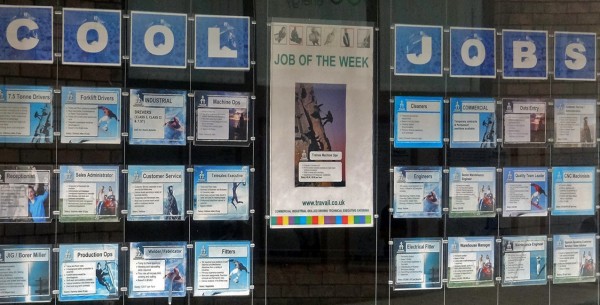 There are countless people who work 12-hour days – some get rewarded with huge salaries, while others are paid peanuts. A key question is: are these people happy? With 24 hours in a day for both rich and poor, the more hours we work, the fewer hours we have for leisure time. So, how do we choose the optimal work-life balance?
There are countless people who work 12-hour days – some get rewarded with huge salaries, while others are paid peanuts. A key question is: are these people happy? With 24 hours in a day for both rich and poor, the more hours we work, the fewer hours we have for leisure time. So, how do we choose the optimal work-life balance?
In economics, we often talk about the concept of diminishing marginal utility and this concept can be applied to working life. For many people, each additional hour worked is tougher or adds less to your utility – we get tired, bored and the job may seem more unpleasant the more hours you work. The typical day of work is around 7-8 hours, but across Sweden, some offices are now closing at 3.30, with a 6-hour working day, but with salaries remaining the same. 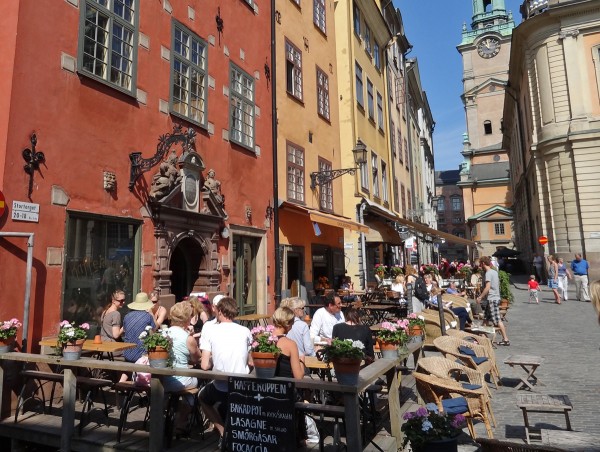 It’s not a new idea in Sweden and trials of this shorter working day concept have proved successful, with higher reported profits, better service to customers (or patients) and happier, more productive staff.
It’s not a new idea in Sweden and trials of this shorter working day concept have proved successful, with higher reported profits, better service to customers (or patients) and happier, more productive staff.
This shorter working day is not a common occurrence across Sweden or other countries, but it’s a practice that is certainly garnering media attention. Companies will certainly be keen if this means an increase in productivity, but one key concern will be the potential loss of business from companies who do keep working after 3.30 and expect phones to be answered.
It would certainly be an attractive prospect for employees and perhaps is a good way of ‘poaching’ the best staff and hence of boosting worker productivity. With more free time, perhaps an employee’s happiness would also increase, which could have significant effects on a range of variables. The following article considers this shorter working day.
The truth about Sweden’s short working hours BBC News, Maddy Savage (2/11/15)
Questions
- Explain the concept of diminishing marginal utility with respect to hours worked. Can this be used to explain why overtime often receives higher rates of pay?
- Using indifference analysis, explain how a change in the number of hours worked might affect an individual’s happiness.
- Why might a shorter working day help to increase a firm’s profits?
- If a shorter working day did increase happiness, what other factors might be affected? Does this explain why other countries are so interested in the success of this initiative?
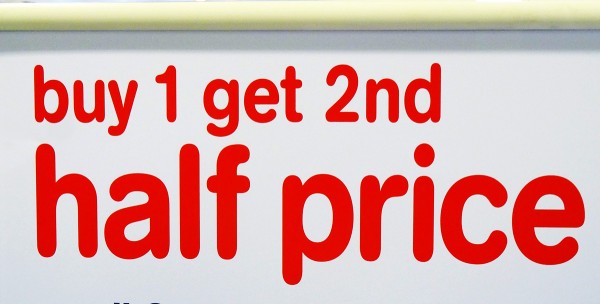 In a blog post on 1 May this year, What’s really on offer?, we looked at the ‘super-complaint‘ by Which? to the Competition and Markets Authority (CMA) about supermarket special offers. The complaint referred to bogus price reductions, ‘cheaper’ multi-buys which weren’t cheaper, smaller pack sizes and confusing special offers. Under the rules of super-complaints, the CMA had 90 days from the receipt of the complaint on 21 April 2015 to publish a response. It has now done so.
In a blog post on 1 May this year, What’s really on offer?, we looked at the ‘super-complaint‘ by Which? to the Competition and Markets Authority (CMA) about supermarket special offers. The complaint referred to bogus price reductions, ‘cheaper’ multi-buys which weren’t cheaper, smaller pack sizes and confusing special offers. Under the rules of super-complaints, the CMA had 90 days from the receipt of the complaint on 21 April 2015 to publish a response. It has now done so.
Here is an extract from its press release:
In its investigation the CMA found examples of pricing and promotional practices that have the potential to confuse or mislead consumers and which could be in breach of consumer law. Where there is evidence of breaches of consumer law this could lead to enforcement action.
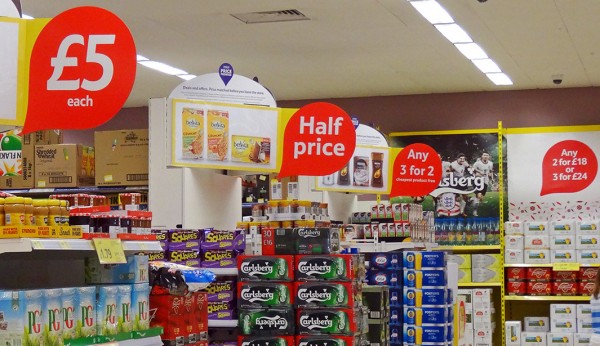 However, it has concluded that these problems are not occurring in large numbers across the whole sector and that generally retailers are taking compliance seriously to avoid such problems occurring. The CMA also found that more could be done to reduce the complexity in unit pricing to make it a more useful comparison tool for consumers. …Nisha Arora, CMA Senior Director, Consumer, said:
However, it has concluded that these problems are not occurring in large numbers across the whole sector and that generally retailers are taking compliance seriously to avoid such problems occurring. The CMA also found that more could be done to reduce the complexity in unit pricing to make it a more useful comparison tool for consumers. …Nisha Arora, CMA Senior Director, Consumer, said:
‘We have found that, whilst supermarkets want to comply with the law and shoppers enjoy a wide range of choices, with an estimated 40% of grocery spending being on items on promotion, there are still areas of poor practice that could confuse or mislead shoppers. So we are recommending further action to improve compliance and ensure that shoppers have clear, accurate information.
Although the CMA believes that misleading pricing is not as widespread as consumer groups have claimed, 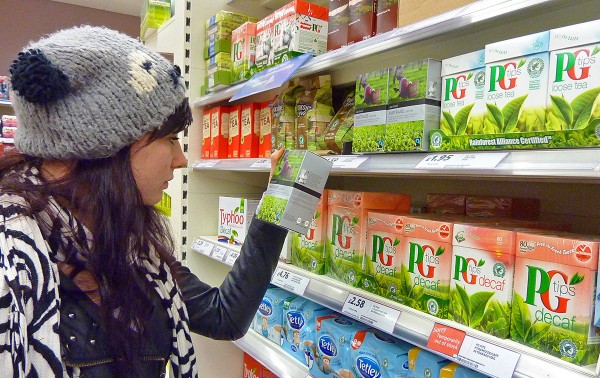 in some cases the supermarkets could be fined. The CMA also says that it will work with the supermarkets to eliminate misleading information in promotions.
in some cases the supermarkets could be fined. The CMA also says that it will work with the supermarkets to eliminate misleading information in promotions.
In addition it recommends that the Department for Business, Innovation and Skills (BIS) publishes guidelines for supermarkets on displaying unit prices in a consistent way. It also recommends that legislation should be simplified on how items should be unit-priced.
The following articles look at the implications of the CMS’ findings.
Articles
Some UK supermarket promotions are misleading, watchdog says Financial Times, Andrea Felsted (16/7/15)
Shoppers beware: Grocers ‘confusing’ consumers with special offers, unit pricing, says government investigation International Business Times, Graham Lanktree (16/7/15)
Supermarket pricing: CMA finds ‘misleading tactics BBC News, Brian Milligan (16/7/15)
 How special are special offers? BBC News, Kamal Ahmed (16/7/15)
How special are special offers? BBC News, Kamal Ahmed (16/7/15)
CMA publications
Response to super-complaint: link to elements of report CMA (16/7/15)
Questions
- Give some examples of the types of promotion used by supermarkets?
- In what ways might such promotions be misleading?
- How is competition from Aldi and Lidl affecting pricing and promotions in the ‘big four’ supermarkets (Tesco, Sainsbury’s, Asda and Morrisons)?
- What cost and other advantages do Aldi and Lidl have over the big four? How might the big four reduce costs?
- Are misleading promotions systemic across the industry?
- How can behavioural economics help to explain consumers’ response to promotions in supermarkets?
- What is meant by ‘heuristics’? How might supermarkets exploit consumers’ use of heuristics in their promotions?
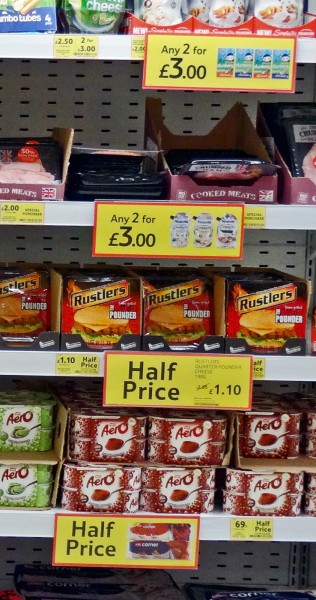 For years, the UK consumer organisation, Which?, has exposed misleading supermarket pricing practices. These include bogus price reductions, ‘cheaper’ multi-buys, smaller pack sizes and confusing special offers. Claiming that these practices are still continuing, Which? has made a super-complaint (available to designated consumer bodies) to the competition regulator, the Competition and Markets Authority (CMA).
For years, the UK consumer organisation, Which?, has exposed misleading supermarket pricing practices. These include bogus price reductions, ‘cheaper’ multi-buys, smaller pack sizes and confusing special offers. Claiming that these practices are still continuing, Which? has made a super-complaint (available to designated consumer bodies) to the competition regulator, the Competition and Markets Authority (CMA).
Commenting on this action, Which? executive director, Richard Lloyd said:
“Despite Which? repeatedly exposing misleading and confusing pricing tactics, and calling for voluntary change by the retailers, these dodgy offers remain on numerous supermarket shelves. Shoppers think they’re getting a bargain but in reality it’s impossible for any consumer to know if they’re genuinely getting a fair deal.
We’re saying enough is enough and using one of the most powerful legal weapons in our armoury to act on behalf of consumers by launching a super-complaint to the regulator. We want an end to misleading pricing tactics and for all retailers to use fair pricing that people can trust.”
The CMA will consider the issues raised under the super-complaint to establish whether any of them are significantly harming the interests of consumers. It will publish a response within 90 days from the receipt of the complaint on 21 April 2015. The possible outcomes include:
|
|
| • |
recommending the quality and accessibility of information for consumers is improved |
| • |
encouraging businesses in the market to self-regulate |
| • |
making recommendations to government to change the legislation or public policy |
| • |
taking competition or consumer enforcement action |
| • |
instigating a market investigation or market study |
| • |
a clean bill of health |
Some 40% of groceries are sold on promotion. Supermarkets are well aware that consumers love to get a bargain and use promotions to persuade consumers to buy things they might not otherwise have done.
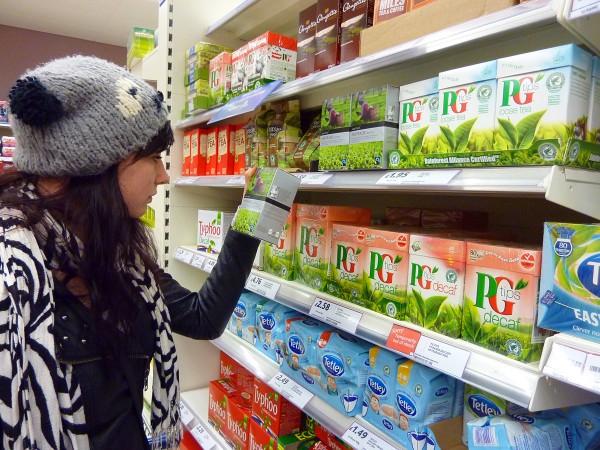 What is more, consumer rationality is bounded by the information and time available. People are often in a hurry when shopping; prices change frequently; people are often buying numerous low-value items; and they don’t know what competitors are charging. People may thus accept an offer as genuine and not spend time investigating whether it is so. Supermarkets know this and use all sorts of tactics to try to persuade people that they are indeed getting a bargain.
What is more, consumer rationality is bounded by the information and time available. People are often in a hurry when shopping; prices change frequently; people are often buying numerous low-value items; and they don’t know what competitors are charging. People may thus accept an offer as genuine and not spend time investigating whether it is so. Supermarkets know this and use all sorts of tactics to try to persuade people that they are indeed getting a bargain.
Videos
 Supermarkets Face Super-Complaint On Pricing Sky News (21/4/15)
Supermarkets Face Super-Complaint On Pricing Sky News (21/4/15)
 UK supermarkets face possible probe over pricing practices Reuters, Neil Maidment (21/4/15)
UK supermarkets face possible probe over pricing practices Reuters, Neil Maidment (21/4/15)
 Which? launches ‘super-complaint’ against supermarkets BBC News, Stephanie McGovern (21/4/15)
Which? launches ‘super-complaint’ against supermarkets BBC News, Stephanie McGovern (21/4/15)
Articles
UK supermarkets dupe shoppers out of hundreds of millions, says Which? The Guardian, Rebecca Smithers (21/4/15)
Supermarkets face inquiry into ‘rip-offs’ The Telegraph, Dan Hyde (21/4/15)
15 supermarket rip-offs that led to an inquiry The Telegraph, Dan Hyde (21/4/15)
What does Which?’s supermarket pricing complaint mean for you? The Guardian (21/4/15)
Supermarkets hit back over Which? report on pricing Financial Times (21/4/15)
Press release
Which? ‘super-complains’ about misleading supermarket pricing practices Which? (21/4/15)
CMA case page
Groceries pricing super-complaint Competition and Markets Authority (21/4/15)
Questions
- Give examples of supermarket offers that are misleading.
- Why are supermarkets able to ‘get away with’ misleading offers?
- How can behavioural economics help to explain consumer behaviour in supermarkets?
- Identify some other super-complaints have been made to the CMA or its predecessor, the Office of Fair Trading. What were the outcomes from the resulting investigations.
- What is meant by ‘heuristics’? How might supermarkets exploit consumers’ use of heuristics in their promotions?
 Many UK coal mines closed in the 1970s and 80s. Coal extraction was too expensive in the UK to compete with cheap imported coal and many consumers were switching away from coal to cleaner fuels. Today many shale oil producers in the USA are finding that extraction has become unprofitable with oil prices having fallen by some 50% since mid-2014 (see A crude indicator of the economy (Part 2) and The price of oil in 2015 and beyond). So is it a bad idea to invest in fossil fuel production? Could such assets become unusable – what is known as ‘stranded assets‘?
Many UK coal mines closed in the 1970s and 80s. Coal extraction was too expensive in the UK to compete with cheap imported coal and many consumers were switching away from coal to cleaner fuels. Today many shale oil producers in the USA are finding that extraction has become unprofitable with oil prices having fallen by some 50% since mid-2014 (see A crude indicator of the economy (Part 2) and The price of oil in 2015 and beyond). So is it a bad idea to invest in fossil fuel production? Could such assets become unusable – what is known as ‘stranded assets‘?
In a speech on 3 March 2015, Confronting the challenges of tomorrow’s world, delivered at an insurance conference, Paul Fisher, Deputy Governor of the Bank of England, warned that a switch to both renewable sources of energy and actions to save energy could hit investors in fossil fuel companies.
‘One live risk right now is of insurers investing in assets that could be left ‘stranded’ by policy changes which limit the use of fossil fuels. As the world increasingly limits carbon emissions, and moves to alternative energy sources, investments in fossil fuels and related technologies – a growing financial market in recent decades – may take a huge hit. There are already a few specific examples of this having happened.
… As the world increasingly limits carbon emissions, and moves to alternative energy sources, investments in fossil fuels and related technologies – a growing financial market in recent decades – may take a huge hit. There are already a few specific examples of this having happened.’
Much of the known reserves of fossil fuels could not be used if climate change targets are to be met. And investment in the search for new reserves would be of little value unless they were very cheap to extract. But will climate change targets be met? 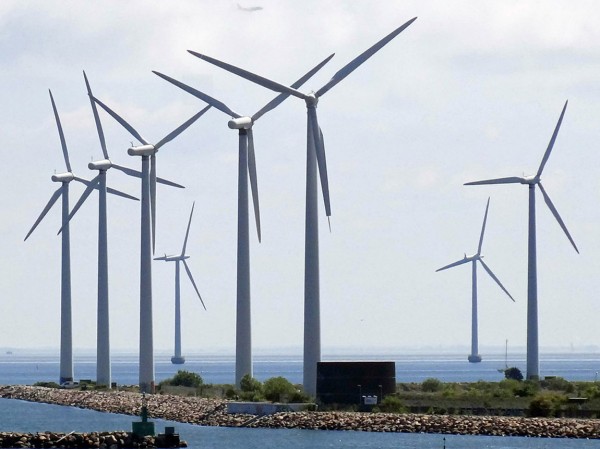 That is hard to predict and depends on international political agreements and implementation, combined with technological developments in fields such as clean-burn technologies, carbon capture and renewable energy. The scale of these developments is uncertain. As Paul Fisher said in his speech:
That is hard to predict and depends on international political agreements and implementation, combined with technological developments in fields such as clean-burn technologies, carbon capture and renewable energy. The scale of these developments is uncertain. As Paul Fisher said in his speech:
‘Tomorrow’s world inevitably brings change. Some changes can be forecast, or guessed by extrapolating from what we know today. But there are, inevitably, the unknown unknowns which will help shape the future. … As an ex-forecaster I can tell you confidently that the only thing we can be certain of is that there will be changes that no one will predict.’
The following articles look at the speech and at the financial risks of fossil fuel investment. The Guardian article also provides links to some useful resources.
Articles
Bank of England warns of huge financial risk from fossil fuel investments The Guardian, Damian Carrington (3/3/15)
PRA warns insurers on fossil fuel assets Insurance Asset Risk (3/3/15)
Energy trends changing investment dynamics UPI, Daniel J. Graeber (3/3/15)
Speech
Confronting the challenges of tomorrow’s world Bank of England, Paul Fisher (3/3/15)
Questions
- What factors are taken into account by investors in fossil fuel assets?
- Why might a power station become a ‘stranded asset’?
- How is game theory relevant in understanding the process of climate change negotiations and the outcomes of such negotiations?
- What social functions are filled by insurance?
- Why does climate change impact on insurers on both sides of their balance sheets?
- What is the Prudential Regulation Authority (PRA)? What is its purpose?
- Explain what is meant by ‘unknown unknowns’. How do they differ from ‘known unknowns’?
- How do the arguments in the article and the speech relate to the controversy about investing in fracking in the UK?
- Explain and comment on the statement by World Bank President, Jim Yong Kim, that sooner rather than later, financial regulators must address the systemic risk associated with carbon-intensive activities in their economies.
 This rather strange question has been central to a storm that has been brewing between various celebrity chefs, including Jamie Oliver and Hugh Fearnley-Whittingstall, and the supermarkets. Supermarkets say that consumers don’t want irregular shaped vegetables, such as carrots, parsnips and potatoes. ‘Nonsense’, say their critics.
This rather strange question has been central to a storm that has been brewing between various celebrity chefs, including Jamie Oliver and Hugh Fearnley-Whittingstall, and the supermarkets. Supermarkets say that consumers don’t want irregular shaped vegetables, such as carrots, parsnips and potatoes. ‘Nonsense’, say their critics. But do consumers really want standardised fruit vegetables? Are the supermarkets correct? Are they responding to demand? Or are they attempting to manipulate demand?
But do consumers really want standardised fruit vegetables? Are the supermarkets correct? Are they responding to demand? Or are they attempting to manipulate demand? The pressure group 38 degrees has already taken up the cause.
The pressure group 38 degrees has already taken up the cause. Hugh’s War on Waste Episode 1 BBC on YouTube, Hugh Fearnley-Whittingstall (2/11/15)
Hugh’s War on Waste Episode 1 BBC on YouTube, Hugh Fearnley-Whittingstall (2/11/15) Hugh’s War on Waste Episode 2 BBC on YouTube, Hugh Fearnley-Whittingstall (9/11/15)
Hugh’s War on Waste Episode 2 BBC on YouTube, Hugh Fearnley-Whittingstall (9/11/15)







